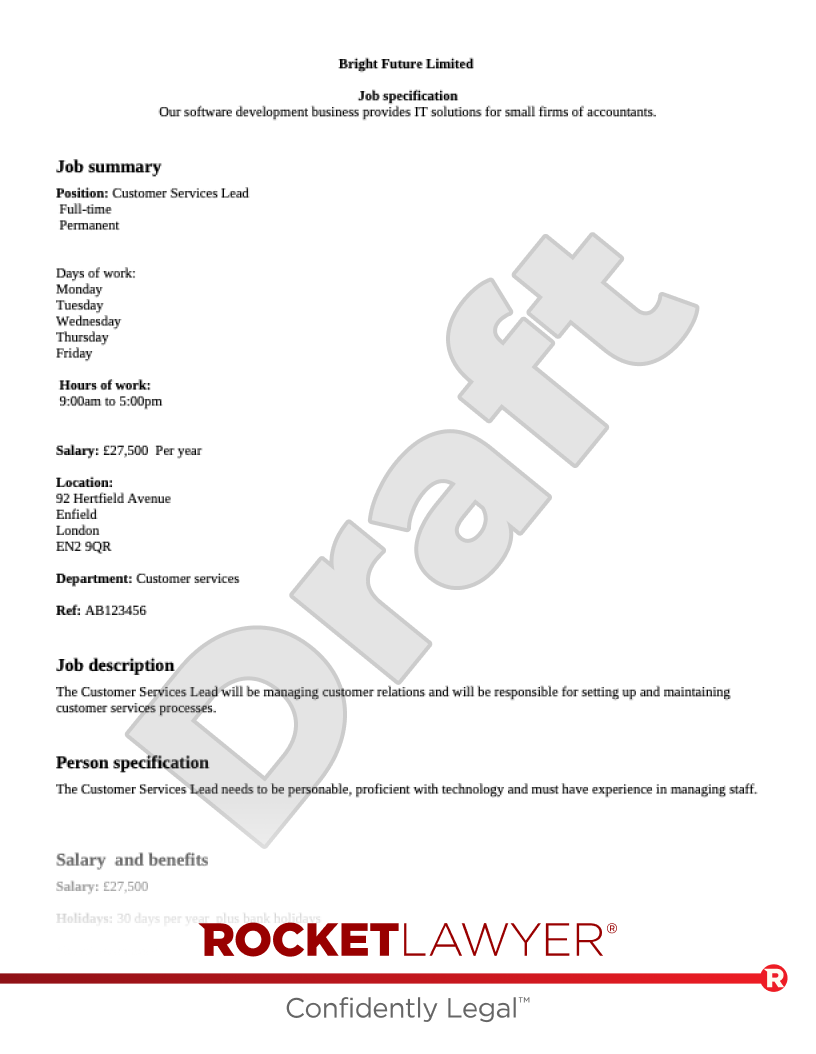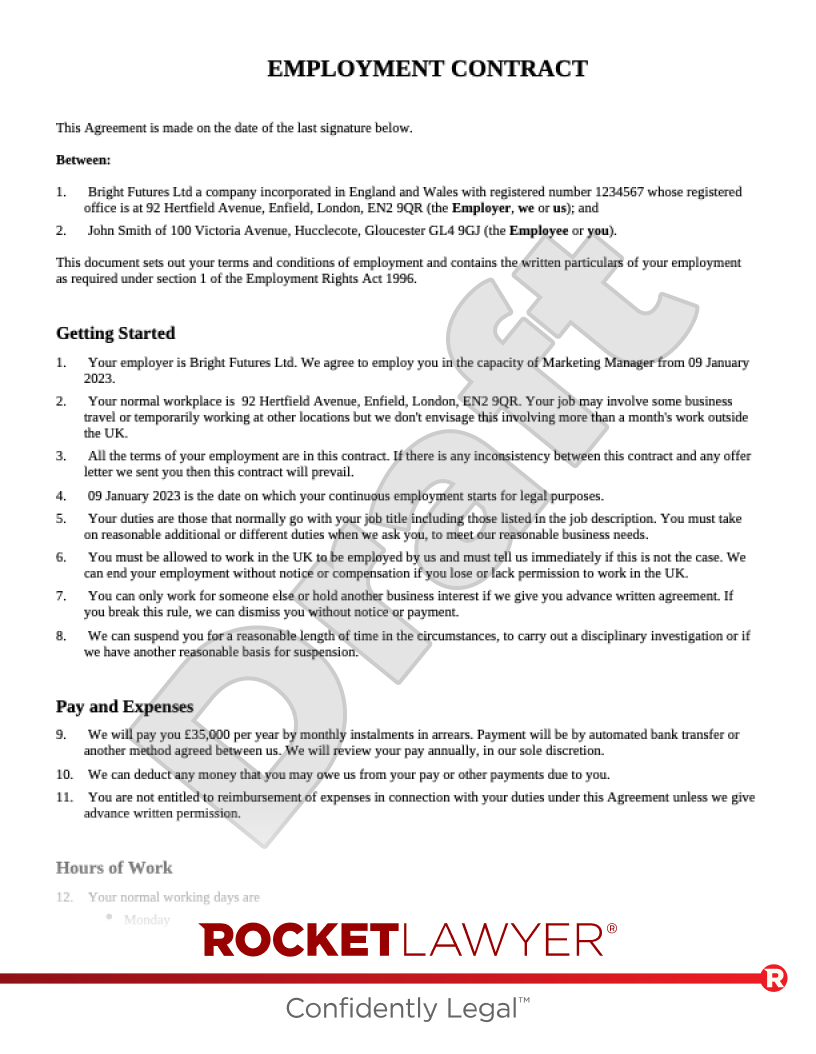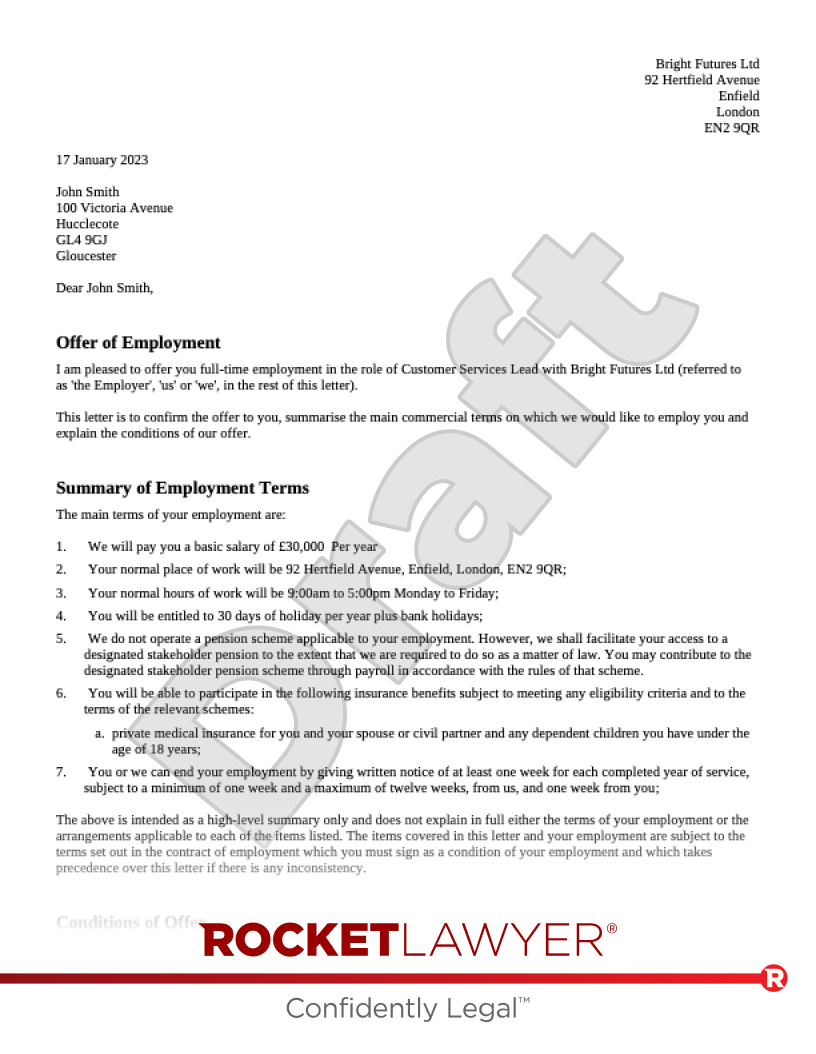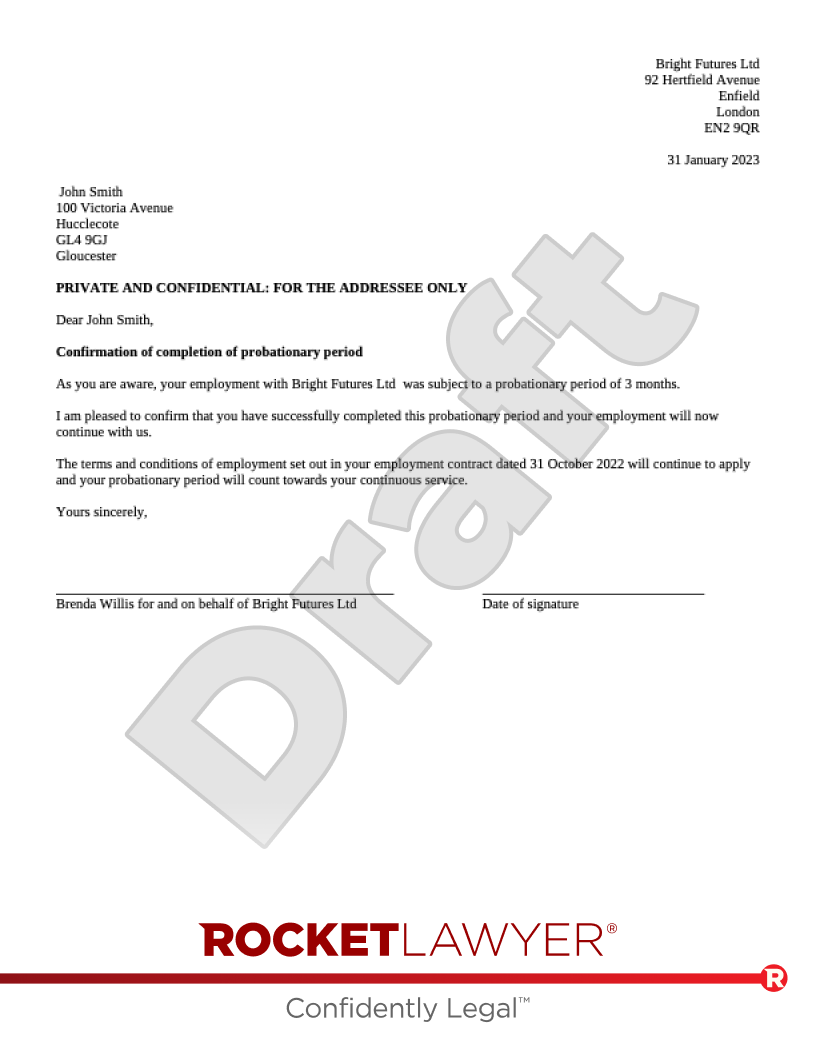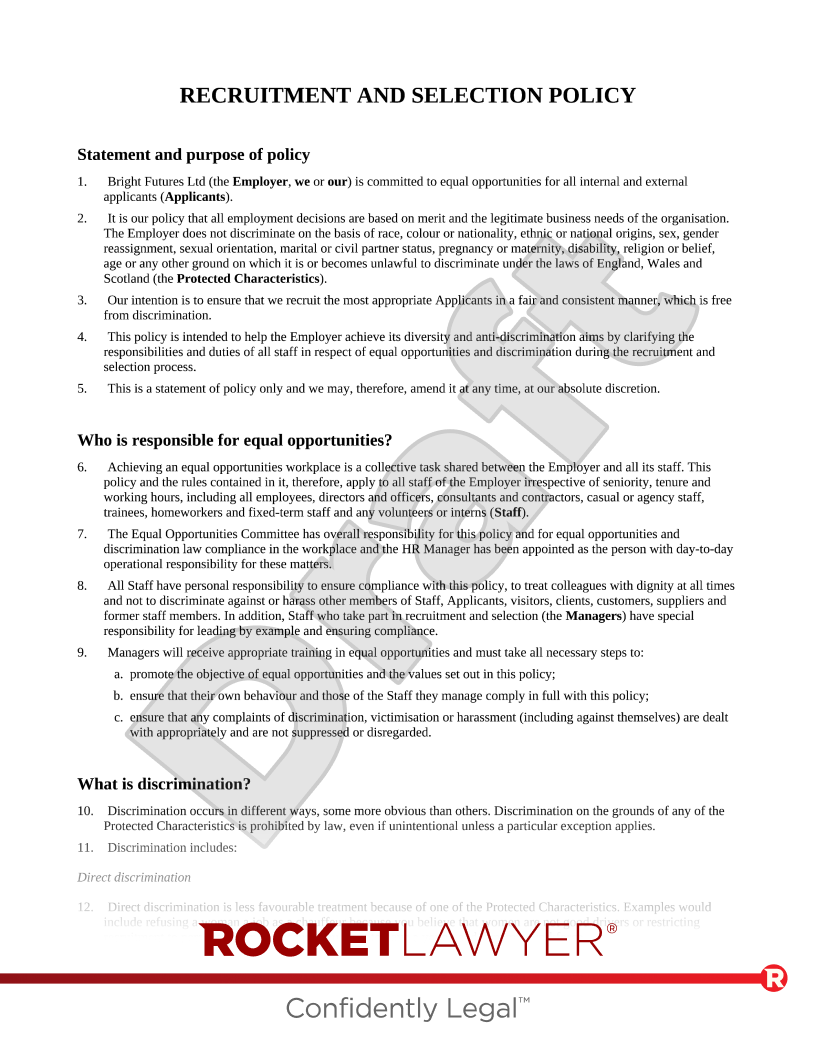Discrimination
To comply with employment law, you must ensure that nothing in a Job Description (or any other job advertisement materials) can be considered discriminatory.
The Equality Act 2010 sets out certain protected characteristics, including age, disability, sex and race. In general, any protected characteristics should not be taken into account in the process of selecting a candidate. Further, a Job Description should not imply that any of these characteristics contribute to the selection criteria, either directly or indirectly.
For example, phrases like 'youthful go-getter' or 'mature experienced' should be avoided when describing an ideal candidate, as they could constitute age discrimination. However, if there is a 'genuine occupational requirement' (eg a young black male actor being required to play the role of a young black male character in a theatre production), this can be included in a Job Description.
For more information, read Equal opportunities and discrimination.
Terminology
Avoid the use of internal terminology and acronyms when preparing a Job Description. Remember that the candidates reading the Job Description will not be familiar with business-specific terms, unless you are recruiting internally.




